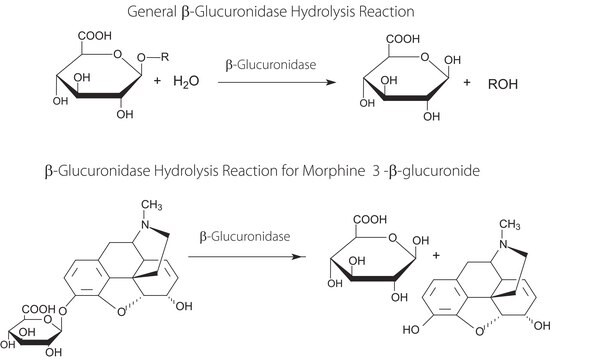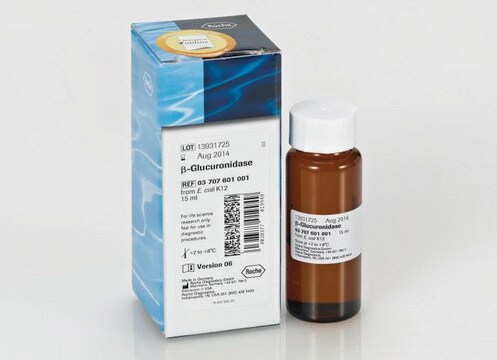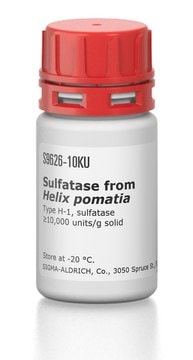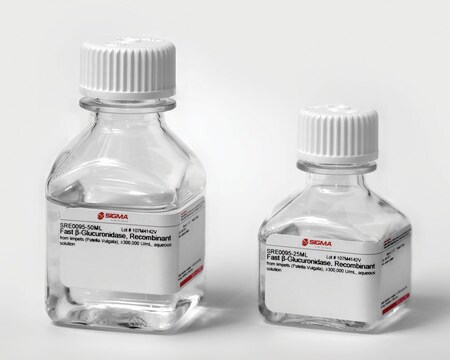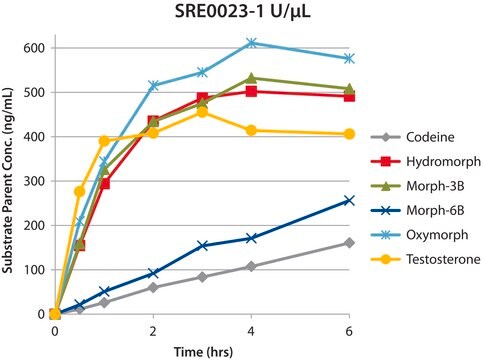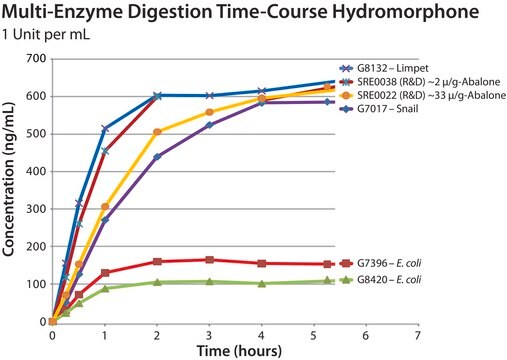G8162
β-Glucuronidase from Escherichia coli
aqueous glycerol solution, ≥5,000,000 units/g protein, pH 6.8 (biuret)
Sinónimos:
β-D-Glucuronide glucuronosohydrolase
About This Item
Productos recomendados
origen biológico
Escherichia coli
Nivel de calidad
formulario
aqueous glycerol solution
actividad específica
≥5,000,000 units/g protein, pH 6.8 (biuret)
mol peso
69-71 kDa
Condiciones de envío
wet ice
temp. de almacenamiento
−20°C
¿Está buscando productos similares? Visita Guía de comparación de productos
Descripción general
Aplicación
The optimal conditions for the enzymatic hydrolysis of α-hydroxytriazolam, one of the major metabolites of triazolam in human urine, were determined using β-glucuronidase Type IX-A.
It is used as a reporter gene in GUS assays to monitor gene expression.
Learn more
about recent application data generated by Sigma R&D to optimize hydrolysis for different drug classes using enzymes from different sources and the use of a chromatographicaly purified enzyme to reduce the effect of esterase activity resulting in conversion of 6-MAM to Morphine
Acciones bioquímicas o fisiológicas
Definición de unidad
Forma física
producto comparable
sustrato
Palabra de señalización
Danger
Frases de peligro
Consejos de prudencia
Clasificaciones de peligro
Resp. Sens. 1
Código de clase de almacenamiento
10 - Combustible liquids
Clase de riesgo para el agua (WGK)
WGK 1
Punto de inflamabilidad (°F)
Not applicable
Punto de inflamabilidad (°C)
Not applicable
Certificados de análisis (COA)
Busque Certificados de análisis (COA) introduciendo el número de lote del producto. Los números de lote se encuentran en la etiqueta del producto después de las palabras «Lot» o «Batch»
¿Ya tiene este producto?
Encuentre la documentación para los productos que ha comprado recientemente en la Biblioteca de documentos.
Los clientes también vieron
Artículos
β-glucuronidase (GUS) enzymes are utilized to hydrolyze glucuronide (gluc) drug metabolites to the parent drug, facilitating analysis by LC-MS/MS.
Today, diverse studies report the benefits of probiotics, such as inhibitory effects on pathogens, aid in the management or prevention of chronic intestinal inflammatory diseases or atopic syndromes, and support to the immune system. Potential beneficial applications abound, researchers continue to evaluate the effictiveness and clarify the mechanisms of action of probiotics.
Protocolos
Enzymatic Assay of β-Glucuronidase (EC 3.2.1.31) from E. coli
Nuestro equipo de científicos tiene experiencia en todas las áreas de investigación: Ciencias de la vida, Ciencia de los materiales, Síntesis química, Cromatografía, Analítica y muchas otras.
Póngase en contacto con el Servicio técnico